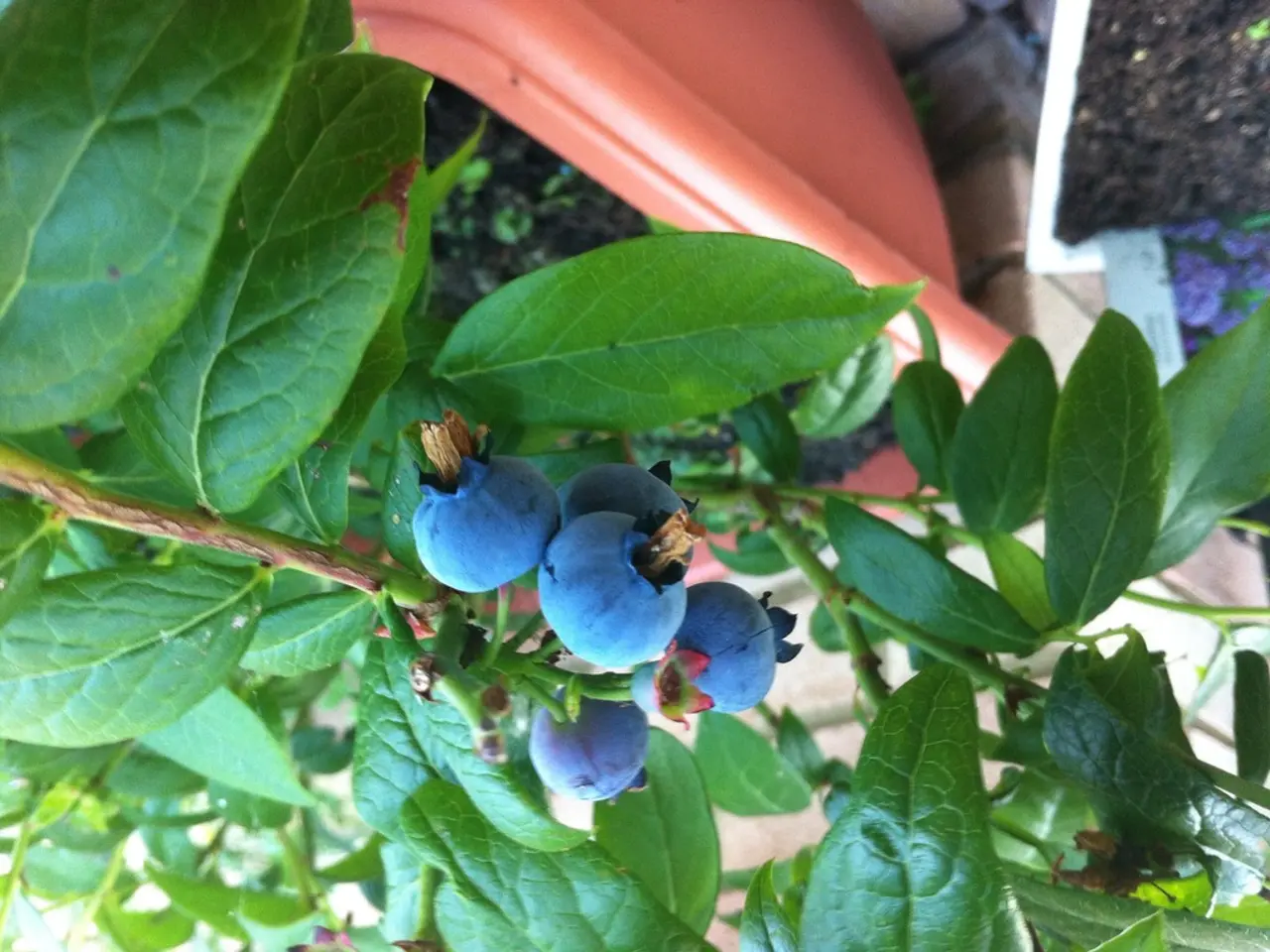Errors in Fertilization Regularly Harming Your Plants Unnoticed (Unaware of the Issue!)
Chill with the Green Thumb Missteps, Get Your Garden Bloomin'
Garden greenery doesn't just blossom magically. Fertilizers, used wisely, can work wonders, but if you don't tread carefully, they can do more harm than good. Let's navigate the most frequent gardening faux pas to keep your plants flourishing, not faltering.
1. Too Much Nitrogen, Y'all
Jumping on the extra nitrogen bandwagon may give your plant a lush appearance, but it'll weaken its roots and stems. Your plant might look fabulous, but it'll struggle to stay fit and healthy. It'll also become vulnerable to pests and diseases. And guess who loves nitrogen? Lawns, that's who. So, remember to measure carefully and stick to the recommended amounts. More ain't always merrier when it comes to fertilizers.
2. Mismatching Fertilizer and Plant Types
Every plant has its own unique nutritional preferences. Tomatoes adore potassium while leafy greens hanker for nitrogen. Using the wrong fertilizer can result in stunted growth or poor fruit production. Get matchy-matchy with your plant's likings to help it thrive and be healthy. Generic solutions rarely produce good results in the garden.
3. Ignores Soil Test Results
Guessing what your soil needs can lead to problems. A soil test reveals the nutrients already present, preventing you from smothering your plants with unneeded nutrients. This can throw off the balance and inhibit growth. Test your soil for a smart investment that'll save you time and money in the long run. It helps you provide your plants with the precise nutrition they crave.
4. Spreading Fertilizer on Dry Soil
Dropping fertilizer on dry soil can burn the plant roots, making the nutrients too powerful without water to diffuse them. Give the soil a gentle water spray before fertilizing to create a protective buffer for the roots and help the nutrients reach the right spots. Moist soil works wonders in fertilizer safety.
5. Fertilizing During Dormancy
Plants get their beauty sleep through dormancy. During this time, they refrain from taking up nutrients. Fertilizing at this point is a waste, as it only stresses the plant. Most plants enter dormancy during winter, but the time varies based on type and climate. Always double-check if your plant is busy sprouting new growth before you start feeding it.
6. Ignoring Container Plant Specifics
Container-dwelling plants lose nutrients faster than their ground-dwelling counterparts, as water drains out and takes the nutrients with it. Following the same feeding routine for both can lead to under- or over-feeding situations in pots. Container plants often require smaller, more frequent feedings. Don't forget that they're in pots!
7. Neglecting Micronutrients
Nitrogen, phosphorus, and potassium get all the attention, but plants also need tiny but mighty micronutrients like iron, zinc, and magnesium. Lacking these may cause flare-ups of stress or weird discoloration. Opt for fertilizers that contain micronutrients, especially if a soil test suggests a shortage. Most gardens don't miss these micronutrients.
8. Fertilizing Right Before a Storm
When your garden party happens to coincide with heavy rain, it's like throwing money down the drain (literally). Most nutrients wash away, leaving your plants with little benefit. It can also wreak havoc on nearby water bodies by polluting them. Check the weather forecast before feeding your garden. Postpone the fertilization if rain is on the horizon.
9. Synthetic Fertilizer Overload
Synthetic fertilizers generate quick results, but they can harm soil health in the long run. Opt for organic sources, like compost or fish emulsion, for healthier soil life. A mix of both provides a boost of quick and lasting results. Feed the soil, not just the plant.
10. Stubbornly Ignoring Label Instructions
Each fertilizer comes with its own strength and formula. Defying the directions can lead to overuse or poor timing. Always read the label to ensure you're using the right amount, frequency, and application time. Following instructions keeps your plants and wallet healthy.
11. Placing Fertilizer too Close to the Base
Plopping fertilizer near the plant's stem can cause root damage and stunt growth. Keep your fertilizer a safe distance from the plant's base. Water well afterward to help the nutrients seep into the surrounding soil. This spares the tender stems, roots, and the plant itself from harm.
12. Fertilizing in High Heat
Hot weather makes plants more sensitive to fertilizer. High temperatures can cause faster nutrient uptake, leading to root burns. Fertilize in cooler temperatures to reduce heat-related stress on your garden inhabitants.
13. Neglecting Organic Matter and Compost
Fertilizers aren't a standalone solution for healthy soil. Organic matter helps soil retain nutrients and moisture. It also encourages the growth of helpful microorganisms. Overreliance on synthetic fertilizers can lead to a weakened soil structure. Add compost regularly for a rich, strong foundation.
14. Skipping Watering After Fertilizing
Leaving dry fertilizer on the surface can cause burns or waste. Watering your plants after applying fertilizer, unless it's a liquid formula, helps move the nutrients to the roots where they're needed most. For granular fertilizers, a good watering is essential.
15. Fertilizing Stressed or Sickly Plants
Ailing plants cannot absorb nutrients efficiently. Fertilizing a sick plant can worsen its condition. Focus on treating the root cause of the problem before feeding your plant. Once the plant recovers, then nourish it with love.
16. Using the Same Fertilizer Year-Round
Plants' nutritional requirements change according to the growing season. Using the same fertilizer throughout the year can lead to nutrient imbalances and poor plant health. Adjust your fertilizer based on the season and your plant's needs. Stay adaptable for healthier plants.
17. Mishandling Slow-Release Fertilizers
Slow-release fertilizers discharge nutrients gradually. Applying them too late may result in your plants receiving nutrients they no longer need. Read the label to determine the duration of the product, then schedule your feedings according to your plants' growth cycles.
18. Thinking More = Faster Growth
The common misconception that extra fertilizer equals faster growth is anything but true. Over-fertilizing can harm your plants, slowing down growth. Stick to recommended amounts for optimal plant health.
19. Overlooking Fertilizer Rotation
Using the same fertilizer every time can cause nutrient overload or deficiencies. Switching between various fertilizers ensures a balanced diet for your plants. Keep your feeding regimen diverse and targeted.
20. Disregarding pH Compatibility
Soil pH affects nutrient absorption. Fertilizers work optimally when the soil pH matches the pH requirement of the plant. Get your soil tested to determine the pH level. Some fertilizers can change the soil pH over time, so keep testing regularly. Maintaining the right pH ensures your plants can absorb the nutrients they need.
21. Fertilizing New Transplants Too Early
Brand-new transplants need time to acclimate before consuming fertilizer. Fertilizing too soon can shock the roots and slow down their growth. Wait until new growth appears before fertilizing for healthier plants. Patience pays off in green dividends.
Smarter Feeding, Healthier Plants
Fertilizers can help your plants thrive, but only when used wisely. Simple adjustments can make a world of difference, from timing and placement to product selection. Staying informed about your plants' needs, soil conditions, and the weather help you avoid waste and reduce harm. Maintain a sharp eye, and your garden will reward you with consistent growth, vibrant blooms, and fewer mishaps.
- A proper balance of essential nutrients, such as those found in science-based fertilizers formulated for health-and-wellness and fitness-and-exercise, can contribute to a thriving garden by promoting strong roots and stems.
- To keep your garden flourishing, it's crucial to choose plant-specific fertilizers that cater to the unique nutritional demands of leafy greens, tomatoes, and other plants, as generic solutions may result in stunted growth or poor fruit production.






